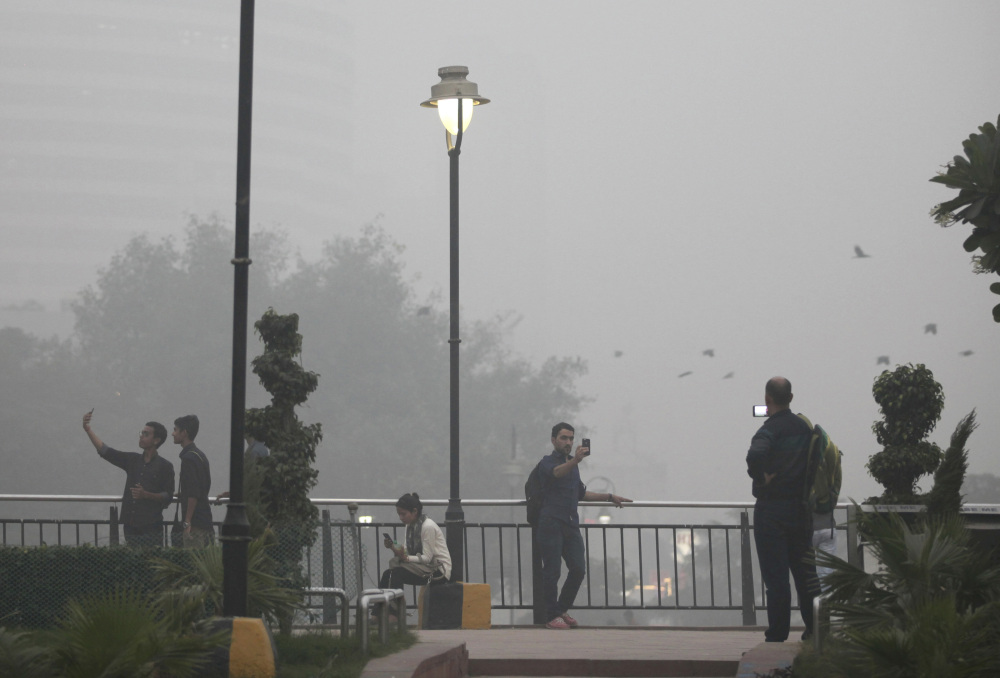NEW DELHI — Even for a city considered one of the world’s most polluted, the Indian capital hit a new low this past week.
Air so dirty you can taste and smell it; a gray haze that makes a gentle stroll a serious health hazard.
According to one advocacy group, government data shows that the smog that enveloped New Delhi was the worst in the last 17 years. The concentration of PM2.5, tiny particulate pollution that can clog lungs, averaged close to 700 micrograms per cubic meter. That’s 12 times the government norm and a whopping 70 times the WHO standards.
Similar problems have also plagued areas of Pakistan, resulting in breathing problems, and causing more than 20 deaths in traffic accidents caused by poor visibility on highways, officials and a meteorologist said.
The Delhi winter, once a glorious time of clear – crisp days that meant holidays and weekends spent picnicking in its many public parks – is now a time of annual health woes.
As millions struggle with hacking coughs and burning eyes, many schools across the city have either shut down or ended all outdoor activities. Doctors have asked people to stay indoors during the worst days.
Yet many of the problems that turn Delhi’s air so toxic continue unabated. People still set off massive amounts of festival fireworks, piles of garbage burn all night and dust from the construction projects that dot the city is unchecked.
And at the start of every winter, farmers in the states bordering the city begin burning straw from their rice paddy crop to clear the fields for planting wheat.
Send questions/comments to the editors.



Success. Please wait for the page to reload. If the page does not reload within 5 seconds, please refresh the page.
Enter your email and password to access comments.
Hi, to comment on stories you must . This profile is in addition to your subscription and website login.
Already have a commenting profile? .
Invalid username/password.
Please check your email to confirm and complete your registration.
Only subscribers are eligible to post comments. Please subscribe or login first for digital access. Here’s why.
Use the form below to reset your password. When you've submitted your account email, we will send an email with a reset code.